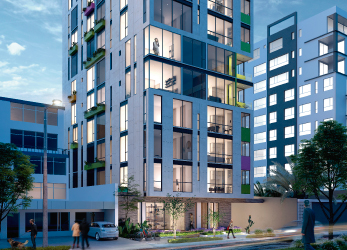Organization: Municipality of the Metropolitan District of Quito - Territory, Habitat and Housing Department (MDMQ)
Category: Políticas, marcos normativos y arreglos institucionales para la Agenda Estratégica de Vivienda (NAU y ODS11)
Context
Issues:
For the city of Quito, transport-generated emissions impact the ecological footprint of the city in a large percentage. This situation is aggravated by rapid growth and an intense real estate expansion towards rural and peri-urban peripheral areas, forcing its inhabitants to commute for long periods of time. For this reason, it has become necessary to create a tool that optimizes public transport for the Municipality of the Metropolitan District of Quito (MDMQ), driving Quito to become a more compact, diverse, and efficient city.
Project objective:
MDMQ has developed a tool that aims at the transformation of Quito into a more dense, compact and diverse city, especially in urban areas directly influenced by integrated public transport systems. The tool allows for an increase of buildable areas in height, beyond the height established in the Land Use and Occupation Plan, for new buildings to be deployed in areas close to public transport systems, and which comply with environmentally responsible design parameters. These parameters are aimed at using resources efficiently, such as water and energy, as well as at contributions in the areas of seismic safety and bioclimatic design. In addition, the tool seeks to be an incentive for the real estate sector while generating resources for the MDMQ.
Scope: Metropolitan, Metropolitan District of Quito
Results
Achieved Results
- 16 approved buildings with an increase in buildability (average of 5 floors) , approximately 1,000 homes, raising approximately USD 3.5 million, from the purchase of the buildability increase license to favor walkable distances of high-capacity public transport.
Expected Results:
- 7 buildings are in approval process; 10 more buildings are expected d by the end of 2018, for a total of 17 extra buildings.
- USD 7.2 million are expected to be generated by the end of 2018, reaching 11 million by 2019/2020. Significant funds for financing priority works and urban improvements for the city.
- By means of the parameters applied in the Herramienta de Eco-Eficiencia ("Eco-Efficiency Tool"), there is a total of 16 approved buildings which, when inhabited, will reach the following optimization and efficiency:
- Approximately 371,047 temporarily retained liters of rain water, which will not enter the sewerage system in cases of extreme rain, thus avoiding flooding in the most resistant areas of the city; A total saving of 215,856 liters of drinking water per person per day is estimated, thanks to gray water and rain water treatment and reuse systems;
- The emission of 23,579 tons of CO2eq will be avoided by means of energy-saving and energy generation strategies, which lessen the impact of the ecological footprint of the city;
- Approximately 10% of the usable area of buildings will be multi-purpose;
- 20% of the ground floor area and building roofs will have a native and adaptive plant cover in the city of Quito.
Person/Contact: Roberto Jose Madera/roberto.madera@quito.gob.e
